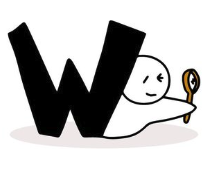Designing a student-first vision for university support services
Co-creating a series of future-state concepts to support students across their university journey.
Industry
Tertiary Education
Duration
8 weeks
Deliverables
8x Future-state service concepts that work together across the student life cycle
Impact
Delivered a future state vision for Student Support Services, drawing on identified insights and opportunities
Provided a detailed implementation plan outlining next steps to continue the work and embed ownership of outcomes
WHAT was the problem
The modern university serves as a comprehensive provider, offering a wide array of services, including accommodation, research, healthcare, commercial partnerships, and, of course, academic learning. As this role continues to evolve, it's crucial to continue to prioritise the needs of students and their learning experience in service delivery.
In a prior engagement with our partner, research involving students highlighted the complexity and frustration they often encounter while navigating their university journey. This includes challenges in finding information about course selection, completing the enrollment process, or addressing extenuating circumstances. Consequently, there was a noticeable lack of trust and confidence in the system.
With a clear understanding of the current student experience, WAVE was engaged to help to explore the next step: envision the future of Student Support Services at the university.
APPROACH we took
Connecting the dots
To formulate this future vision, we needed to connect various elements: ongoing university initiatives, insights from past research on the student experience, and a vision for what an ideal future might look like in three to five years. Collaborating with our project stakeholders, we agreed that the vision should be both aspirational and practical. To support this framing, we drew from previous WAVE research involving students, engaged with existing university-wide journey mapping, and leveraged the firsthand experiences of staff and Subject Matter Experts (SMEs).
Drawing on inspiration from leading service providers
We also drew inspiration from leading service providers outside the university sector. We examined how other leading universities, government service providers such as Services NSW or Services Australia, modern banking apps, mental health services, and digital-first solutions from prominent consumer tech companies deliver services. This exercise expanded our thinking and provided valuable inspiration for co-creation efforts.
Generating ideas with subject matter experts
We conducted multiple sessions with staff representing various stages of the student journey to generate ideas that could address key pain points and opportunities. The analogous examples we gathered aligned with different stages of the journey and served as additional stimulus during workshops. By bringing together SMEs from different areas of the university, including faculty, marketing, wellbeing, and frontline service delivery, we gained a more holistic understanding of the situation. This process led to the development of over 100 discrete ideas, ranging from changing service hours to implementing automatic enrolment, establishing physical service co-location, creating an inquiry tracking system, and developing a student portfolio builder.
Making sure our concepts worked with students and staff
Ensuring our concepts resonated with both students and staff was critical. We conducted validation workshops with a diverse group of students to ensure our concepts were on the right track and to prioritise them based on student feedback. Additionally, we organised drop-in critique sessions with our staff SMEs to facilitate questions, feedback, and refinement of the concepts. These sessions not only provided valuable input but also engaged staff throughout the process, allowing them to shape and influence the concepts at different stages of design and development.
In the final stage of the design process, we employed the DVF Framework (Desirability, Viability, Feasibility) with a core group of internal stakeholders to prioritise the concepts at a high level for further detailed design.
VALUE we created
A shift towards future thinking
To bring the vision to life, we created a series of high-level concepts designed to work cohesively throughout the student lifecycle, supporting students through critical transitions such as accepting an offer, enrolling in coursework, or connecting with peers. These concepts were structured around the student experience, with narratives describing how they would support the student journey. To make them more tangible, we developed mock-ups of digital experiences, allowing students and staff to engage more deeply with the possibilities of the future.
For our client, this project represented a valuable exercise in shifting staff thinking towards the future, moving beyond day-to-day operational matters. During a time of change and transformation at the university, it was essential to encourage a forward-looking perspective while always keeping the student experience at the forefront. This involved promoting new ways of thinking, drawing insights from analogous examples in service organisations outside the tertiary sector to provide fresh perspectives.
EMPOWERMENT we embedded
Bringing people together to align on a shared vision
By bringing together staff from diverse faculties and service functions, who may not have previously collaborated, we fostered opportunities to share experiences and develop a common understanding. These collaborative discussions, where everyone engaged in discussing a particular stage of the student journey, offered a diverse range of perspectives that contributed to the development of future state concepts.
This, in turn, provided clarity in the short-to-mid-term and created a common reference point for multidisciplinary teams across the university. It helped connect the dots on various ongoing initiatives and created alignment around the future we are striving to achieve. We further set our partner up for success by clearly outlining the next steps they could take to start moving towards the future vision.
Project Reflections
When we ask people to envision the future, we need to take an intentional, considered approach. It is critical to give them the time, space and permission to do so. As humans, we tend to like certainty and things that we can reach out and grab onto, so talking about abstract, future possibilities requires a mindset shift. For someone used to working on the frontline delivering services day-to-day, it is natural for them to focus on the difficulties and practicalities of changing anything in the current environment - limitations of systems, resources, decision-making. Investing in framing the envisioning process for people and empowering those who are involved, is important to get the most meaningful outcome.
- Mackenzie | Service Designer, WAVE
This case study was compiled and written by Mackenzie Campbell, Service Designer at WAVE. Mackenzie is a curious human who is passionate about using the participatory power of design to reimagine services and the way we deliver them. With a background in the strategic side of federal government, he is always looking for new ways to put the community at the forefront of decision-making.
Get in touch
If you need a proven methodology to identify and solve problems, creating a culture of innovation along the way, we are here to help. We’d love to talk more about what you need and how we’ve helped in similar situations.








